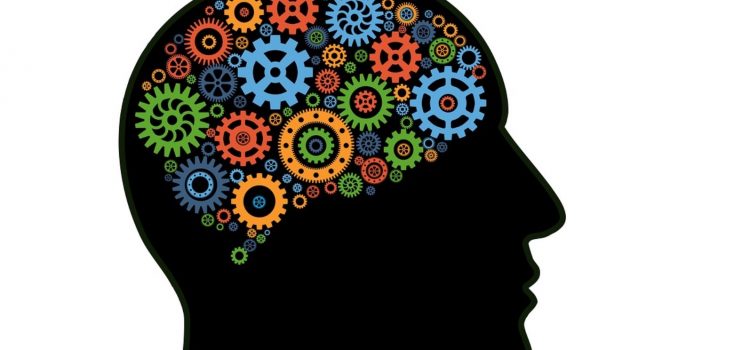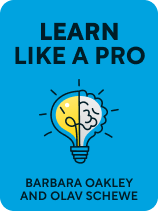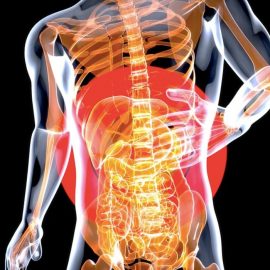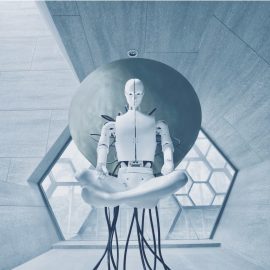

This article is an excerpt from the Shortform book guide to "Learn Like a Pro" by Barbara Oakley and Olav Schewe. Shortform has the world's best summaries and analyses of books you should be reading.
Like this article? Sign up for a free trial here.
Would you like to learn how to play the guitar or speak French? What learning skills can help you pick up any other type of skill?
Once you have a basic understanding of how knowledge gets into your brain and stays there, you can make the most of what you learn. Barbara Oakley and Olav Schewe, in Learn Like a Pro, help you understand two systems that your brain uses to learn.
Read on to get a practical introduction to declarative learning and procedural learning.
Declarative Learning & Procedural Learning
Knowledge moves from your working memory into your long-term memory through one of two ways: either the declarative learning system or the procedural learning system.
| Understanding Memory: The Dual-Process Theory Oakley and Schewe’s two “learning systems”—declarative and procedural—correlate with a more widely accepted and research-supported model of memory called the dual-process theory. This model suggests that two main systems are involved in information processing: an intuitive, automatic system (procedural) and an analytical, controlled system (declarative). The intuitive system quickly and effortlessly processes information, relying on past experiences and stored knowledge. The analytical system, on the other hand, is slower and more deliberate, using logic and reasoning to analyze information. Outside the book, the terms declarative and procedural are more often used to describe subtypes of long-term memory, not the processes that help form memories in your brain. The Working Memory Model discussed above is a more accurate theory for how declarative and procedural memories move from your working memory to your long-term memory. |
The declarative learning system deposits information into your conscious memory so that you’re aware of it and can purposefully recall it. This is how you store information, like facts about a subject you’re learning for a test. With this system, you learn through logical and sequential steps: A + B = C. Once you’ve learned something through the declarative system, your working memory retrieves that information from your long-term memory through the declarative neural pathways.
The procedural system deposits information into your subconscious memory. This is the type of long-term memory you pull from when performing skills you’re so familiar with that they become automatic, and you don’t have to consciously direct them—like driving a car, typing on a keyboard, or recalling information you know deeply. The procedural system works by instinctively sensing and remembering patterns through repeated exposure to the information or by practicing an action.
(Shortform note: Cognition and neuroscience experts often refer to declarative and procedural memory as explicit and implicit memory, respectively. Explicit memory (declarative) has two different components: episodic memory, which allows you to recall specific events from the past, and semantic memory, which stores general knowledge and factual information about the world. Implicit memory (procedural) is often called “muscle memory” because it involves the memory of specific physical actions and movements. Because your implicit memories are thought to be supported by different neural pathways than explicit memories, they’re often less susceptible to the effects of aging and neurological damage.)
You can learn most effectively by tapping both systems. When you first learn something, you use your declarative system to consciously understand a concept or perform an action. Then, with practice, your procedural system builds on that learning and ingrains it into your long-term memory. For example, let’s say you’re learning to play a tune on the piano—when you first learn it, you have to consciously think about each note that comes next, what rhythm to play, and so on, using your declarative system. Then, over time, the procedural system builds on those neural connections, and eventually, you can play the piece confidently without thinking through each step.
(Shortform note: Oakley’s and Schewe’s explanation corresponds with the dual-process model of memory, which suggests that the two systems—the intuitive automatic (procedural) and the analytical controlled (declarative)—work together and influence each other. The intuitive system provides a foundation of memorized knowledge and automatic judgments for the controlled system to build upon. By working together, the two systems enhance our brain’s learning and memory abilities.)
Gain Mastery and Fluency With the Procedural System
The authors discuss some techniques that can help you understand concepts deeply enough that they become governed by your procedural system, so you can access that information or skill without consciously thinking about it. Two areas that can benefit from this ability are mathematics and languages.
To comprehend complex mathematical concepts intuitively, you must understand why they work, not just the step-by-step methods of how they work. To achieve that level of mastery, the authors recommend you solve practice problems for which you have access to their step-by-step resolved solutions. Then, try to figure out each step yourself before checking the solution. This will train you to listen to your inner voice—your intuition—about how to approach the problem and will help you internalize the process. Once you’ve internalized it, you’ll be able to tackle other, similar problems because your brain will have learned the patterns behind them.
(Shortform note: In Ultralearning, Scott Young explains that experts’ problem-solving intuition is the result of deeply understanding those subjects’ underlying principles. He outlines many ways to develop deep, intuitive knowledge, one of which is to let yourself struggle and find your own way to the answers and solutions as you learn. This approach is exactly what the problem-solving exercise above facilitates by encouraging you to work through difficult problems on your own. Young’s suggestion is to set a timer for 10 to 15 minutes when you’re faced with a difficult problem, and then force yourself to work on it until the timer goes off. If you don’t solve it in that time, you’ll at least spur your brain to keep thinking about it.)
To learn new languages, you can use both your declarative and procedural systems to help you internalize vocabulary and grammar rules and to achieve fluency (a level of familiarity where you can speak naturally without having to think about it). To support the pattern-finding power of your procedural system, space out your practice sessions—the longer you want to remember, the longer you should pause between review sessions. For example, they say that, if you want to remember the material for a year, have a review session every three weeks.
(Shortform note: Brown, Roediger III, and McDaniel, the authors of Make It Stick, explain an additional way to space out your practice which can help you achieve fluency in a new language: practicing your new skill in different contexts. Doing so enhances your understanding of the underlying patterns and improves your ability to use that skill in various situations. This method helps you apply what you have learned to different situations and encourages your brain to think quickly and fluidly—for example, talking to native speakers in the language you’re trying to learn.)

———End of Preview———
Like what you just read? Read the rest of the world's best book summary and analysis of Barbara Oakley and Olav Schewe's "Learn Like a Pro" at Shortform.
Here's what you'll find in our full Learn Like a Pro summary:
- Proven techniques for mastering new skills and knowledge quickly
- How to improve your memory, increase your focus, and manage your time
- Practical tips for how to excel in academic settings






